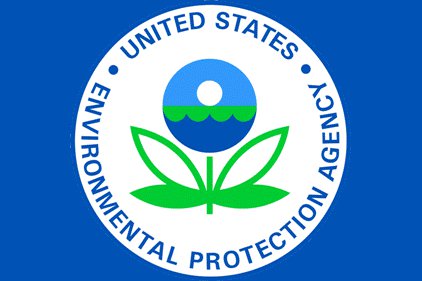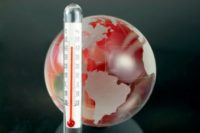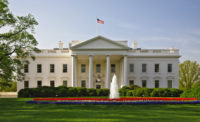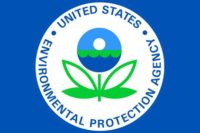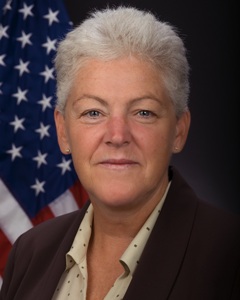 In her first speech as the brand new head of the EPA, Gina McCarthy focused on climate change. The following are excerpts from the remarks she delivered last week at Harvard Law School:
In her first speech as the brand new head of the EPA, Gina McCarthy focused on climate change. The following are excerpts from the remarks she delivered last week at Harvard Law School:
Getting confirmed two weeks ago was truly an honor of a lifetime and that’s good because it seemed to take even longer than that to get from nomination to the Senate vote. Ok slight exaggeration. A thousand plus questions, 70 plus Senate visits and 147 days later and here I am – “that was easy!”
A giant leap forward
I want to take a just minute up front – before I do anything else - to thank President Obama for his willingness to nominate and stand by me - every step of the way, knowing the challenge we would both be facing. I haven’t exactly been a wallflower at EPA. I know that will surprise many of you. But the President not only supported me, he confirmed his support for EPA and our mission to protect public health and the environment when he nominated me. Under President Obama, EPA has seen one of the most productive times in the agency’s history. In the air world we took common sense steps to reduce mercury pollution and other harmful toxics from our air, we established new health standards to reduce fine particle pollution, soot and sulfur dioxide, and we took a giant leap forward towards a cleaner energy future with our greenhouse gas standards for cars and trucks – standards which were welcomed by car manufacturers, the UAW and consumer groups. It doesn’t get any better than that but that doesn’t mean these actions were without controversy; far from it.
But the President knew and I knew that EPA had followed the science and the law and took advantage of every creative, flexible, cost-effective opportunity to make way for solutions that would serve this nation’s energy needs and the needs of America families. And we both knew there was so much more we could do and had to do over the next few years to build on this success.
Slow the effects of climate change
In fact, the president had the courage and the vision during this whole process to stand up in 100 plus degree weather at Georgetown University to give what is clearly the most important speech on climate change that any American president has ever given in which he called on all of us to take action. Most notable he told EPA to work with states, tribes, local governments, utilities, unions, folks in environmental and energy organizations, NGOs, the faith community and others – to move ahead with rules to reduce GHG emissions from new and existing power plants. He challenges us to make sure that this effort continued the development of homegrown energy while steadily and responsibly taking steps to cut carbon pollution. That way we would protect our kids’ health and begin to slow the effects of climate change – leaving a cleaner, more stable environment for future generations. And he told all agencies to work with communities to ensure that they are resilient enough to adapt to a changing climate. That speech is what stewardship and leadership is all about.
Rivers changing colors
EPA was created by executive order of President Richard Nixon way back 43 years ago – this country has seen some huge successes in protecting our environment and public health. I know I am old but I am not that old. I remember what my world looked like back in 1970 – and it wasn’t pretty, unless you think that the rivers running through Lowell being yellow one day and blue the next because of the discharges from the textile industry was pretty. But so much has changed – for the better.
Between 1970 and 2011, aggregate emissions of common air pollutants dropped 68 percent while the U.S. Gross Domestic Product grew 212 percent, vehicle miles traveled increased 167 percent, and the U.S. population grew 52 percent. So, the bad things went down while the good things went up. That sounds pretty good so far. Right?
In fact, from 1970 through 1990 – programs under the clean air act have helped prevent:
o More than 205 thousand premature deaths
o 843 thousand asthma attacks
o 18 million child respiratory illnesses
And while EPA, states, tribes and local communities were accomplishing these major health improvements, as the law intended, total private sector jobs increased by 88 percent. And according to our analysis, benefits of the clean air act in 2020 will outweigh the costs by a ratio of more than 30-to-1. Not too shabby….
And there’s more. Since the Brownfields program’s inception in 1995 and through June of 2013, EPA has provided tools to communities and tribes to assist them in making more than 41,550 acres ready for reuse. This helped create more than 93,100 jobs for cleanup and redevelopment activities, and leverage more than $20.8 billion in economic development.
Based on historical data and grantee reporting, every $1 of the EPA Brownfields funding leverages between $17 and $18 in other public and private funding to advance cleanup and development of these properties.
These successes represent real achievements in real communities across the country. Concrete examples of how EPA is having a substantive positive impact on people’s everyday lives - without slowing economic growth and in many cases helping to drive it.
But regardless of these proven successes, EPA is facing significant challenges. And we have to be ready not just to tout the successes we have accomplished, but to convince the American public that we are taking advantage of the best thinking, the newest technologies, the most cost-effective, sustainable solutions to meet their needs and our mission moving forward. That means understanding how climate change solutions and other and environmental protections fit as part of a sound national and global environmental and economic agenda. Put simply, we have to move beyond discussions about the how there is no inherent conflict between the environment and the economy and recognize that the future – our future – Maggie’s future – demands an economy that recognizes the limitations of the world’s resources, the fragility of the world’s ecosystems, the threats posed by pollution and a changing climate and that turns those challenges into the basis for a strong, sustainable economy that serves the needs of our current and future generations.
A false choice
For too long we have been focused on a false choice: between the health of our children and the health of our economy – and we have endlessly debated that choice even in the face of 43 years of documented history that proved that it just ain’t so. Today, the truth we need to embrace is that cutting carbon pollution will spark business innovation, will grow jobs, and will strengthen the economy.
Again – take a look at the fuel-economy standards announced by President Obama in 2011. EPA worked with industry leaders and our government partners to find smart, pragmatic solutions to reduce carbon pollution from passenger cars and trucks. And look at the American auto industry today.
EPA doesn't get credit
On the brink of collapse four years ago, the center for automotive research now predicts the auto industry will add 35,000 jobs in 2013. And the Wall Street Journal said the industry is emerging as an “export powerhouse,” with more than one million cars and light trucks exported from U.S. auto plants. Surprisingly the WSJ failed to credit EPA with any role in this economic turnaround….what’s that all about?
The LDV success followed one of the game plans that EPA hopes to keep using in other sectors to reduce emissions, strengthen energy security, and develop new economic benefits for consumers and businesses. Right now, state and local communities - as well as industry, universities, and other non-profits - have been piloting projects, advancing policies, and developing best practices that follow the same basic blueprint: combining environmental and economic interests for maximum benefit. In New England you know all this – you have been leading the way. Look at what Massachusetts has done – what the cities of Boston and Somerville have done – to save money by reducing carbon pollution through increased efficiency, renewable energy investments, smart transportation policies, and the like. I could go on and on. These on-the-ground efforts are the future and if we are smart, we can help grow these efforts all across the United States - today. We can harness the American entrepreneurial spirit, develop new technologies and create new jobs, while at the same time reduce carbon pollution as the stewards that our children expect us to be.
As more businesses embrace the “opportunity” of climate change, I see additional public and private sector investment being leveraged to support infrastructure and clean energy – and these investments will, in turn, fuel the complementary goals of turning America into a magnet for new jobs and manufacturing. You see it too – right?
The world we leave behind
Last month when he unveiled his plan, President Obama made the case for urgent efforts to tackle climate change this way - he said and I quote: “The question now is whether we will have the courage to act before it’s too late. And how we answer will have a profound impact on the world that we leave behind.”
Other countries have recognized the potential in clean energy and are making historic investments in their advancements. Last year, China alone invested a record $67.7 billion in clean energy - 20 percent more than they invested in 2011. Can the U.S. afford to not make that same level of commitment? We’ve seen significant resources being committed to clean energy by the president over the past four plus years - we need a broader coalition to step up now. We need industry leaders – established companies and new startups, working with community and labor leaders, activists, scholars and scientists – and maybe even lawyers – working together.
And I know as well as anyone, that when it comes to cutting carbon, there is a lot we can learn from our states. Nearly a dozen states have already implemented or are implementing their own market-based reduction programs. More than 25 have set energy efficiency targets. More than 35 have set renewable energy targets. And over 1,000 mayors across the country have signed agreements to cut carbon pollution in their cities. These local and state officials are the leading edge in this effort, and we at EPA want to build on and compliment these efforts already underway.
Where our interests meet
The history and the future of environmental protection will be built on this type of collaboration. Because innovation is where our economic and environmental interests meet – and where future jobs are created.
Innovation is exactly what’s going to help solve the environmental challenges we face today. EPA will be looking at the challenges ahead with our eyes wide open –relying on smart, strategic, partnerships, collaboration, and ongoing engagement. We will approach each challenge with flexible and sustainable solutions using a pragmatic and common sense compass to guide our way. And I am confident we will succeed. We can and will continue to make a real, positive difference on the ground in communities around the country. That is the true measure of our success.
Thankfully I have the great work of my predecessor, Lisa P. Jackson, to build on. I will do that by continuing to focus attention on improving the environment in communities that have been adversely or disproportionately impacted by exposure to environmental hazards and pollution. Everyone wants to live and work in healthy places and EPA must find a way to address the needs of people and communities that have been left behind. I know that success in these environmental justice communities will require innovative and sustainable solutions, integrated with community development and private investments. But if that’s what it will take, that is what we will try to deliver – though collaborative efforts.
Extreme weather projected
If you think about it, with projections for more numerous extreme weather events, isn’t it exactly these same communities that will be most at risk in a changing climate? Floods and droughts place added strain on our communities, our states and our country, especially those who live in our most challenging urban neighborhoods and rural communities. EPA must work with states, tribes, local governments and community leaders – especially those that are already facing disproportionate environmental impacts - to prepare our infrastructure for a changing climate and to build in the resilience we need for future generations. Isn’t that the lesson that Sandy taught us?
Increased drought conditions are already challenging our communities, while more frequent and intense storms are straining our ability to manage stormwater runoff, to deliver safe drinking water and to ensure proper wastewater treatment. Our pipes and water treatment systems were not built to manage the record-breaking storms that are becoming ever-more frequent. But as the President said, working here at home to update our cities and our infrastructure means local jobs.
To close, I have little doubt about the continued critical importance of EPA and its mission. If EPA executes its duties and responsibilities effectively, we have a good chance of becoming an integral part of a sound, sustainable economy that will shape our future. And EPA has a good chance to support our nation’s ongoing economic recovery by protecting our air, water, and land - for ourselves and our children.
